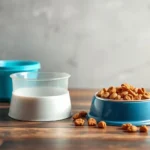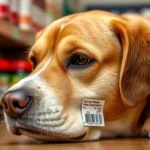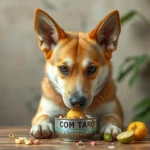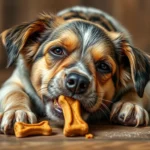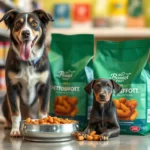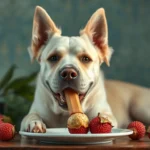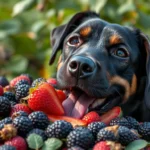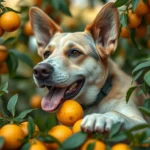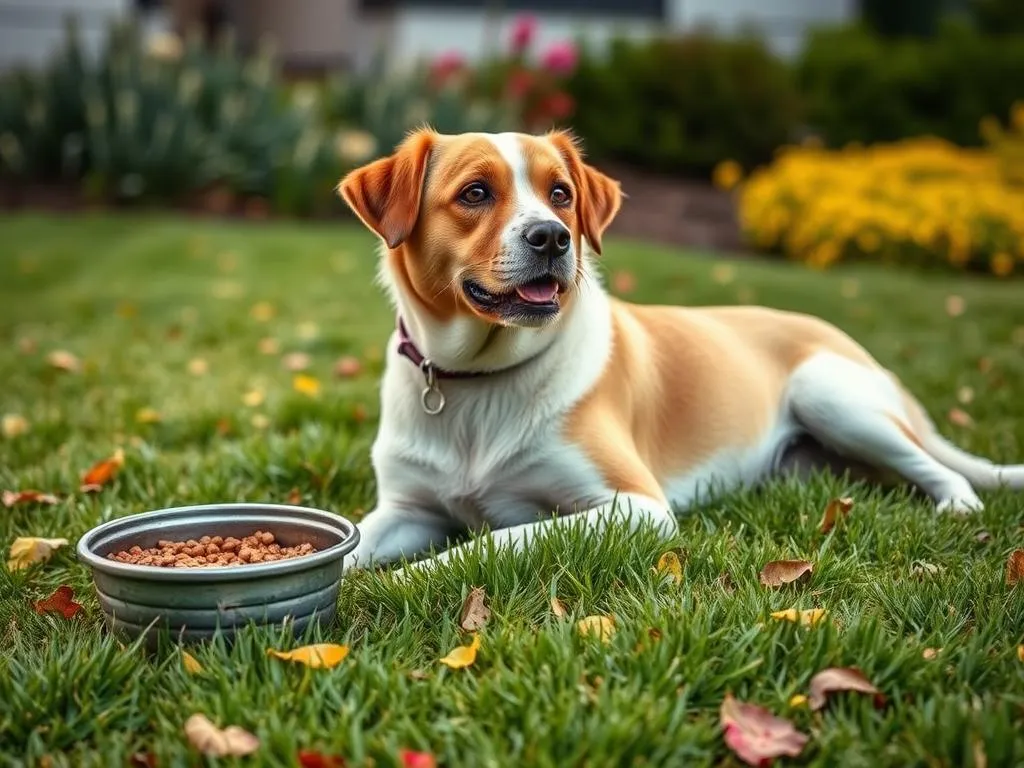
Introduction
Proper nutrition is a critical component of dog health, influencing everything from energy levels to coat quality. When it comes to dog nutrition, there are several common issues that owners face, including food allergies, obesity, and, notably, the effect of a dog’s diet on their impact on our lawns. One significant concern among dog owners is lawn burn—the unsightly brown patches that appear on grass due to dog urine. Understanding the relationship between dog nutrition and lawn burn can help owners make better dietary choices for their pets.
Lawn burn occurs primarily due to the nitrogen content in dog urine. When dogs urinate on grass, the concentrated nitrogen can scorch the blades, leading to unsightly brown spots. By modifying a dog’s diet, owners can potentially reduce the nitrogen concentration in their dog’s urine, thereby minimizing lawn burn. This article aims to provide valuable insights into the best dog foods to prevent lawn burn, alongside guidance on making informed dietary choices for your furry friend.
The Science Behind Lawn Burn
What is Lawn Burn?
Lawn burn is a term used to describe the damage caused to grass by dog urine. The primary visual signs of lawn burn include yellowing or browning of grass blades, often surrounded by a dark green halo. This contrast occurs because the concentrated nitrogen in the urine stimulates rapid growth in some areas while damaging others.
Why Do Dogs Cause Lawn Burn?
The composition of a dog’s urine plays a crucial role in causing lawn burn. Urine consists of various waste products, including urea and nitrogen. A dog’s diet directly influences these components, particularly the nitrogen levels. Factors such as the type of food consumed, overall hydration, and even the dog’s health can affect the concentration of these substances in their urine.
The Role of Diet in Urine Composition
Diet is a significant determinant of urine composition. Foods high in protein typically contain higher levels of nitrogen, which can lead to more concentrated urine. Conversely, a diet lower in protein and higher in fiber may help dilute the nitrogen levels in urine, potentially reducing the risk of lawn burn. Additionally, maintaining optimal hydration through diet—such as incorporating wet food—can further mitigate concentration levels in urine.
Key Nutritional Components to Consider
Protein Sources
Choosing the right type of protein is essential for minimizing lawn burn. Proteins can be animal-based or plant-based, and the source impacts how easily dogs digest these nutrients. High-quality, easily digestible proteins, such as chicken, fish, or eggs, are generally recommended. Lower protein levels, typically ranging between 18-25%, may help reduce nitrogen output in urine.
Hydration
Water intake is critical for overall health, but it also plays a crucial role in urine composition. Dogs that are well-hydrated produce more diluted urine, which can reduce the risk of lawn burn. Wet food can be a beneficial addition to a dog’s diet, as it typically contains higher moisture content than dry kibble.
Other Key Nutrients
Fiber is another important component to consider. It aids in digestion and can help regulate the overall balance of nutrients in a dog’s diet. Additionally, the pH levels of urine can influence lawn health. An overly acidic urine pH can exacerbate lawn burn, so it’s important to include ingredients that promote a more alkaline balance, such as certain vegetables.
Best Dog Foods to Prevent Lawn Burn
Ingredients to Look For
When selecting the best dog foods to prevent lawn burn, look for options that feature:
- Low-protein options: Choose foods that contain lower levels of protein, ideally between 18-20%.
- High-quality protein sources: Select brands that utilize easily digestible protein sources, such as fish or chicken.
- Added probiotics and fiber: Probiotics can improve digestion, while fiber can help regulate urine composition.
Recommended Dog Food Brands
Here are some top brands that focus on preventing lawn burn through their carefully crafted formulas:
-
Brand A: This brand offers a low-protein formula made with high-quality chicken and brown rice. The inclusion of probiotics aids digestion, while added fiber helps regulate urine concentration.
-
Brand B: Known for its grain-free options, Brand B utilizes sweet potatoes and peas as carbohydrate sources. They provide moderate protein levels and added omega fatty acids for a healthy coat.
-
Brand C: This brand specializes in custom diets tailored to the dog’s specific needs. Their low-protein formulas include a variety of fruits and vegetables, promoting a more balanced urine composition.
Homemade Dog Food Recipes
For those interested in preparing homemade dog food, here are a couple of simple recipes focusing on low-protein and high-fiber ingredients. However, it’s essential to consult a veterinarian before making any significant dietary changes.
- Vegetable and Rice Mix
- Ingredients: 1 cup brown rice, 1/2 cup carrots (finely chopped), 1/2 cup peas, 1/2 cup pumpkin puree, and 1/4 cup chicken broth (low sodium).
-
Instructions: Cook the brown rice according to package instructions. In a separate pot, steam the carrots and peas until soft. Mix all ingredients together and serve.
-
Fish and Sweet Potato Stew
- Ingredients: 1 cup sweet potatoes (cubed), 1 can of tuna (in water), 1/2 cup green beans, and 2 cups low-sodium chicken broth.
- Instructions: Boil sweet potatoes until tender. In a pot, combine cooked sweet potatoes, tuna, green beans, and broth. Simmer for 10 minutes, then serve.
Additional Tips for Dog Owners
Adjusting Feeding Habits
To aid in preventing lawn burn, it’s beneficial to adjust your dog’s feeding habits. Consider implementing portion control and establishing a consistent feeding schedule. Feeding your dog smaller amounts throughout the day can help maximize hydration and reduce the concentration of urine.
Encouraging Water Intake
Increasing your dog’s water consumption is vital for reducing lawn burn. Here are some tips to encourage hydration:
- Provide fresh water: Change your dog’s water daily to ensure it remains fresh and appealing.
- Use water fountains: Many dogs are more likely to drink from flowing water sources.
- Incorporate wet food: Adding wet food to your dog’s diet can significantly increase their overall water intake.
Lawn Care Practices
Maintaining a healthy lawn while owning dogs can be challenging, but there are several strategies to mitigate lawn burn:
- Designate a bathroom area: Train your dog to use a specific area of your yard for bathroom breaks. This can help localize damage.
- Use lawn treatments: Certain products can help neutralize the nitrogen in urine and promote grass recovery.
- Consider grass types: Some grass varieties are more resilient to dog urine than others. Researching suitable grass types for dog owners can be beneficial.
Consult with a Professional
Importance of Veterinary Guidance
Consulting a veterinarian is crucial when tailoring your dog’s diet to prevent lawn burn. A vet can provide personalized advice based on your dog’s specific needs, age, and health conditions. Regular check-ups can help monitor dietary effectiveness and allow for necessary adjustments.
Signs of Nutritional Issues
As a dog owner, being aware of signs indicating potential nutritional issues is important. Common signs include:
- Changes in appetite
- Weight fluctuations
- Digestive problems (diarrhea, vomiting)
- Changes in energy levels
If you notice any of these symptoms, it may be time to seek professional advice.
Conclusion
The connection between dog nutrition and lawn burn is significant. By selecting the right foods and maintaining proper hydration levels, dog owners can effectively minimize the risk of lawn damage. Remember, a balanced diet not only supports your dog’s overall health but also helps preserve the beauty of your lawn. Responsible pet ownership involves understanding these connections and making informed choices that benefit both your furry friend and your green space.
